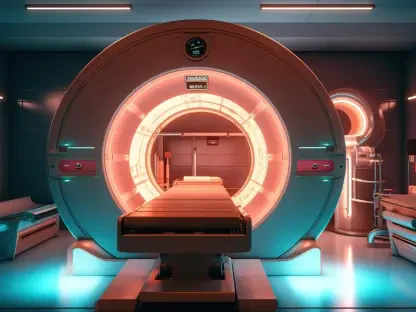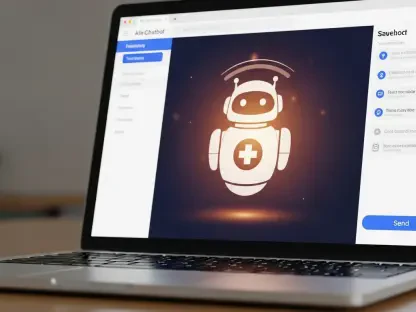The University of Vermont Health Network’s ongoing struggle to recover from a debilitating cyberattack underscores glaring gaps in current cybersecurity plans within the healthcare sector. According to Nate Couture, the network’s Chief Information Security Officer, the recovery process unveiled serious deficiencies in conventional cyber incident response plans, which typically conclude with broad steps like “IT recovers the systems.” Such vague directives fail to account for the lengthy, complex journey to full operational restoration. In the wake of the attack, the hospital faced massive disruptions, showcasing the insufficiency of their existing preparedness for protracted system downtimes. These inadequacies are not isolated incidents but instead reflective of systemic vulnerabilities across healthcare organizations.
Couture’s account reveals the prolonged nature of their recovery: it took 24 days just to bring the electronic medical record (EMR) system back online, 110 days to restore crucial software applications, and over 200 days to clear a backlog of paper records. Each step of this drawn-out effort highlights the substantial susceptibility healthcare systems have to cyber threats. The ripple effects were far-reaching, touching every aspect of hospital operations and patient care. These incidents demonstrate the importance of having more robust cyber incident response strategies that prepare for not just the initial containment but also for sustained recovery efforts.
The Protracted Recovery Process
The detailed timeline provided by Couture paints a vivid picture of the extended recovery journey that healthcare institutions must be prepared for in the event of a cyberattack. Initially, the focus was on regaining access to the critical EMR system. For 24 days, hospital staff had to adapt to working without digital records, leading to operational inefficiencies and increased risks in patient care. The time-consuming shift back to EMRs underscored the gaps in existing protocols that assumed quicker recovery periods. This phase of the process revealed how overly simplistic incident response plans can leave organizations vulnerable during the most critical moments following a breach.
Recovery did not end with the reinstatement of EMR systems. It took an additional 110 days to fully restore the various software applications essential for day-to-day functions. This prolonged downtime significantly affected hospital services, from administrative tasks to direct patient care. During this period, staff faced hurdles in accessing vital information and tools, which further illuminated the necessity for more comprehensive recovery strategies. These extensive challenges showcased that traditional plans are largely insufficient in addressing the long-term impacts of cyberattacks, which can paralyze institutions for months on end.
Importance of Comprehensive Recovery Strategies
The experience of the University of Vermont Health Network serves as a cautionary tale that other healthcare institutions should heed. The revelations from this incident emphasize the urgent need to develop more comprehensive and continuously updated cyber incident response plans. These strategies should be designed to withstand extended disruptions and include specific steps for long-term restoration. Real-world testing of these plans is crucial to ensure they are practical and effective when an actual cyberattack occurs. Continuous updates based on emerging threats and lessons learned from past incidents are also essential to maintain preparedness.
One of the critical lessons from the Vermont Health Network’s ordeal is the inadequate preparation for the paper-based system they had to resort to during the recovery. It took over 200 days to clear the backlog of paper records that piled up when digital systems were down. This phase highlighted a monumental challenge that many healthcare facilities would face in similar situations. Therefore, future recovery strategies must account for the logistical and operational demands of such transitions, ensuring that even analog backup plans are thoroughly tested and ready to implement. This holistic approach can significantly mitigate the adverse effects of prolonged system outages.
Rethinking Cyber Resilience in Healthcare
The University of Vermont Health Network’s struggle to recover from a crippling cyberattack exposes significant gaps in current cybersecurity protocols within the healthcare industry. According to Nate Couture, the network’s Chief Information Security Officer, their recovery highlighted major flaws in traditional cyber incident response plans, which often end with vague steps like “IT recovers the systems.” These general directives don’t address the lengthy and intricate process needed to fully restore operations. Following the attack, the hospital experienced massive disruptions, underscoring their lack of preparedness for extended system downtimes. These shortcomings aren’t isolated; they reveal widespread vulnerabilities across healthcare organizations.
Couture detailed the arduous recovery: it took 24 days to get the electronic medical record (EMR) system back online, 110 days to restore essential software applications, and over 200 days to deal with a backlog of paper records. This protracted recovery period highlights the significant vulnerabilities healthcare systems face against cyber threats. The fallout affected all aspects of hospital operations and patient care, proving the need for more comprehensive cyber incident response plans that go beyond initial containment to include long-term recovery efforts.









